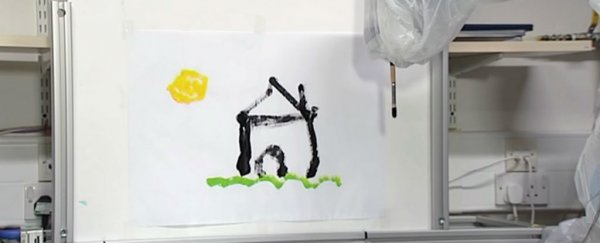In the midst of robots being put to use for a variety of medical, scientific and environmental purposes, it's good to see the arts haven't been completely forgotten. A machine developed by researchers in the UK lets people paint using just their eyes. It works using new eye-tracking technology that interprets blinks and stares, and can turn them into movements of a paintbrush or the action of choosing between colours.
"Augmentation of the human body with an extra pair of limbs is technically feasible in terms of the robotics end of things, so we can mechanically attach these types of limbs," one of the team, Aldo Faisal from Imperial College London, told Farrha Khan and TechRadar. "The biggest challenge is if you're controlling a third arm, you want it to be natural, seamless and you don't want to think about it… We're talking really about how can we augment, extend the human body with additional limbs that are useful in daily life."
The technology is still in its early stages, and you can't yet create something worthy of Picasso or Rembrandt, but there's a lot of potential here - users can simply look at the part of the canvas they want the brush to move to, while a series of blinks indicates that they want to change the colour or clean the brush. Straight lines are created by staring at one point on the canvas and then staring somewhere else.
The technology could be hugely beneficial for those who've lost limbs through amputation or paralysis, though Faisal and his colleagues are more interested in giving everyone the opportunity to use an extra set of limbs (maybe one day playing the piano and the guitar at the same time). To make that kind of multi-tasking safe, the human-robot interface needs to be as natural as possible.
The Imperial College London Robotics Forum, of which Faisal's group is a part, is one of the largest robotics networks in Europe (it accounts for 21 research groups in total). Last week, a major showcase of the latest advancements in the field was held at the college, covering robot vision, microscopic machines, and the ability of artificial intelligence to learn from the actions of humans.
"Since time immemorial, human imagination has sparked the idea of having additional arms: think about the Hindu goddess Shiva, for example," says Faisal. "Imagine doing the dishes while taking a phone call, or holding your baby and preparing food at the same time, because you have that extra pair of hands attached to you."
That's still some way off, but these simple paintings are just another step towards getting there.
